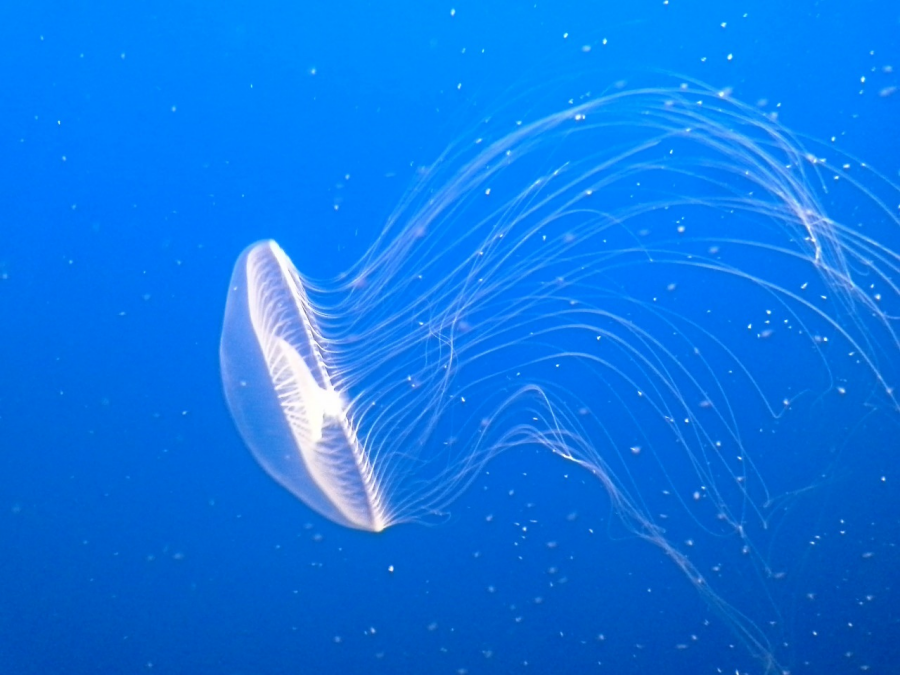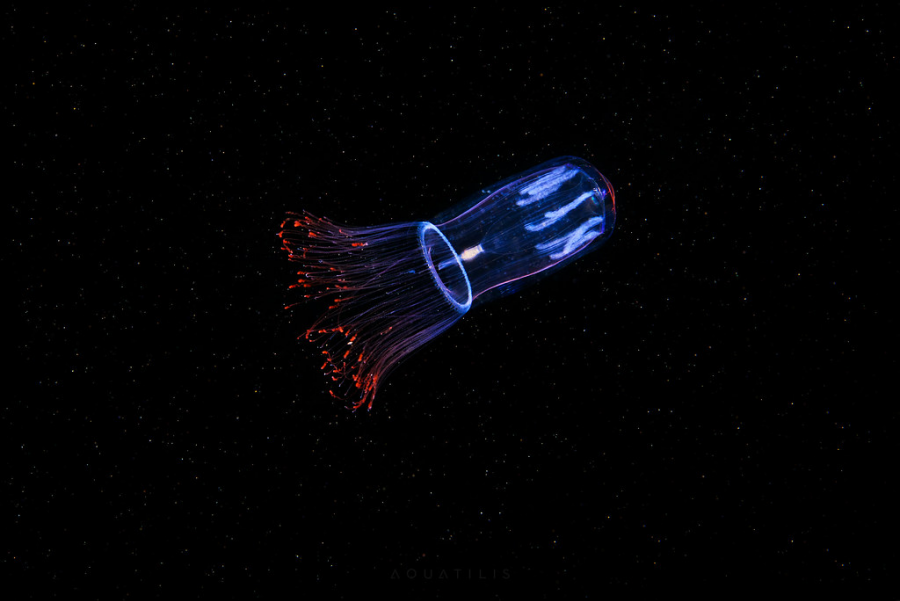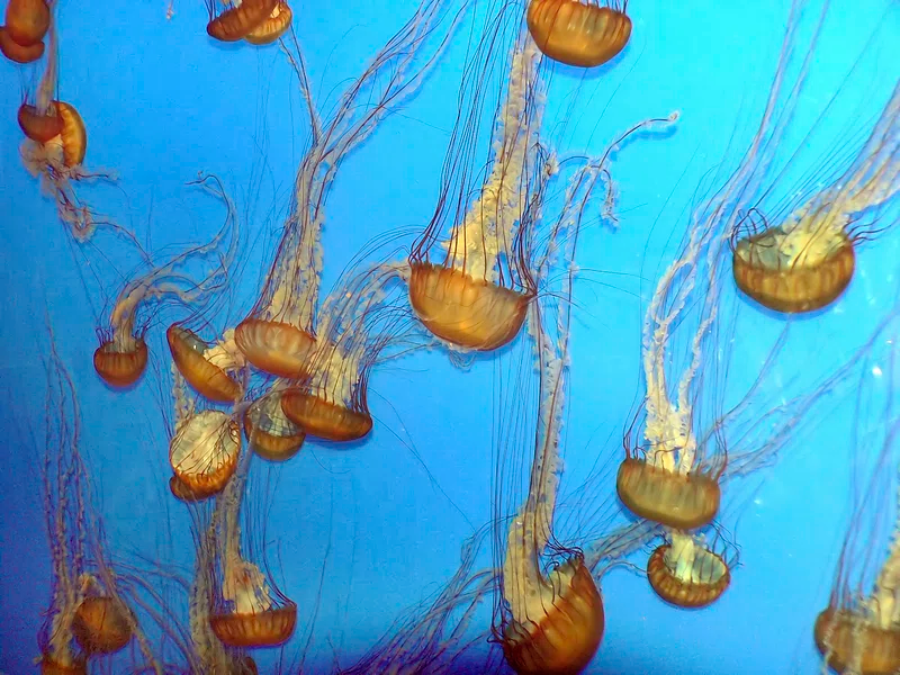

The potential consequences of deep-sea mining on midwater marine species are described in a new study headed by experts at the Helmholtz Centre for Ocean Research Kiel in Germany.
 The authors note in a paper that was published in the journal Nature Communications that while mining activities will target the minerals on the seafloor, they will also disrupt and pump up fine silt from the seafloor, creating suspended sediment "clouds" or plumes along the seafloor. The silt that has accumulated must be released back into the water column once the ship is in position.
The authors note in a paper that was published in the journal Nature Communications that while mining activities will target the minerals on the seafloor, they will also disrupt and pump up fine silt from the seafloor, creating suspended sediment "clouds" or plumes along the seafloor. The silt that has accumulated must be released back into the water column once the ship is in position.
The plumes that are produced can stretch for tens to hundreds of kilometers across the water column, according to the researchers, because there are currently no rules dictating the depth at which the sediment should be released.Thus, animal communities on the seafloor as well as those in the water column above it, or midwater, would be impacted by deep-sea mining.
In addition to being the primary food source for numerous fish, squid, and marine mammal species, the midwater is essential to the global ocean's ability to store carbon, according to Helena Hauss, the study's first co-author, who made this statement in a media release.
"They may be more vulnerable to changes in their environment because they have evolved under conditions that are significantly more stable than those of surface-dwelling animals, such as a continual food shortage."
Midwater species are particularly sensitive to disruptions because, in addition to being used to steady conditions, they are often frail, gelatinous, and occasionally enormous animals with slow metabolic rates.
Senior author of the paper Henk-Jan Hoving stated, "We have only scratched the surface when it comes to exploring the midwater and most biodiversity still remains unknown, as well as their function in the ecosystem and their tolerance to change."
The helmet-shaped jellyfish:
 Hauss, Hoving, and associates concentrated on the helmet jellyfish in order to close the information gap about the reactions of midwater organisms to environmental stressors.
Hauss, Hoving, and associates concentrated on the helmet jellyfish in order to close the information gap about the reactions of midwater organisms to environmental stressors.
"We explored their response from multiple angles and combined insights gained from their physiology, gene expression, and the microbial symbionts on the jellyfish's exterior because determining'stress' in a jellyfish is not an easy process," said Vanessa Stenvers, co-first author of the study.
According to Stenverns, the most noticeable visual impact of the suspended sediment was the way the sediment particles gathered on the jellyfish after only about 1.5 hours of incubation, causing the jellyfish to begin producing extra mucus that gradually shed off.
Although mucus assisted jellyfish in keeping their microbiome consistent, she pointed out that continual mucus production is an energy-intensive reaction that can consume a significant amount of an animal's entire energy budget.
Further indicating stress, jellyfish in the highest sediment treatments also had significant expression of genes linked to wound healing, innate immunity, and breathing.
It will take years to fully understand how ecosystems respond to stresses, therefore further research is needed to determine whether jellyfish can recover after exposure.
Even worse than global warming
 The researchers also stressed that a four-degree increase in seawater temperature did not cause helmet jellyfish to react more severely than suspended sediment did. According to current climate estimates, sea temperatures will rise by one degree over the next 84 years, with four degrees of rise only expected in the most extreme scenarios of global warming.
The researchers also stressed that a four-degree increase in seawater temperature did not cause helmet jellyfish to react more severely than suspended sediment did. According to current climate estimates, sea temperatures will rise by one degree over the next 84 years, with four degrees of rise only expected in the most extreme scenarios of global warming.
The scientists worry that stresses resulting in higher energy expenditure—like those they saw in the helmet jellyfish—will force people to eat more. This could eventually result in famine because food is typically sparse in the deep sea.
The stress reaction of helmet jellyfish may be indicative of other gelatinous organisms, which are also common in deep-sea environments, even if more data from various midwater species are required to fully understand the environmental implications of deep-sea mining.
The researchers warn against deep-sea mining because it may jeopardize several of the vital ecosystem services provided by the deep ocean, based on their overall findings.
Co-author Andrew K. Sweetman of the study stated, "Understanding the combined effects of mining and ocean warming is essential, especially with deep-sea mining potentially starting in the next decade, which has the potential to disturb nearby water column habitats as well as the seafloor."
Thanks for reading this guys.
Self care is wealth. Everyone care about yourself so then only care for your family and all.
Please give your remarks to improve my writings also. stay for next blog.
Bye guys, love you all
